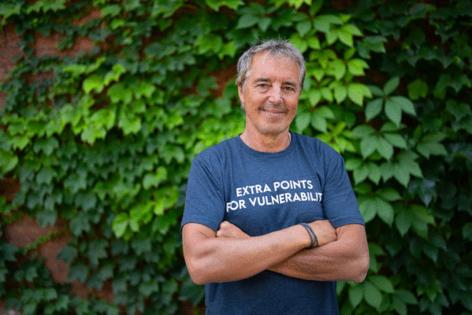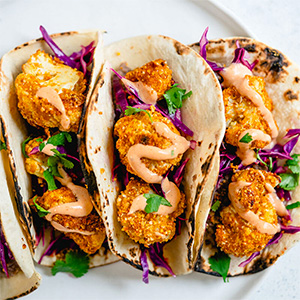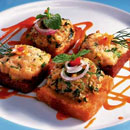Mastering the Blue Zone way of life has never been easier
Published in Variety Menu
MINNEAPOLIS -- Tao Organic Cafe has been holding court on Hennepin Avenue in Minneapolis for more than a half-century, but it never gets old for Dan Buettner.
“You’re in for a real treat,” he said while ordering two Tao bowls, each rich with beans, rice, ginger-kissed vegetables, sesame seeds and a heaping side of enthusiasm. “This is the consummate Blue Zone bowl.”
Buettner, a Minnesota native, has made a career out of spreading the Blue Zone gospel, a term he coined for areas around the world where a high percentage of the population live exceptionally long lives. The researcher, science writer and bestselling author just released his third cookbook, “The Blue Zones Kitchen: One Pot Meals.” It’s part of his quest to put into action what he’s learned from more than two decades studying Blue Zone communities.
“I fancy myself a science journalist, and I never set out to be a cookbook writer,” Buettner said. Yet of his nine Blue Zone books, the cookbooks sell the best.
First was “The Blue Zone Kitchens,” followed by “The Blue Zone American Kitchen,” which featured some of the country’s top chefs who happened to cook the Blue Zone way. He wrote his current book with a twist: using artificial intelligence along with science to make eating healthy “irresistible.”
A taste of science
“I’ve made my career in reverse engineering,” Buettner said of his work on studying the world’s longest-living cultures. “So with no judgment at all, I simply wanted to reverse engineer taste.”
He sought help from a friend, Johannes Eichstaedt, who ran an AI lab at Stanford University. They scraped 650,000 recipes from top cooking websites, isolated ones that earned more than 100 five-star reviews and then boiled down the flavor profiles. That information, along with the Blue Zone guidelines, went to a recipe developer.
“A very clear pattern emerged,” he said, which included traditional Italian and Tex-Mex flavors, stir-fries and curries. “And broccoli and mushrooms — that shocked me — and lemon and herbs, which is very Mediterranean.”
Knowing people make the worst food decisions when they are hungry and in a hurry, they made the recipes quick, easy and requiring only one pot to make.
“At the end of the day people don’t really give much of a crap that this is healthy,” Buettner said. “What they care about is ‘Am I going to sit in front of a bowl of deliciousness at lunch, dinner or breakfast.”
One of many tools
The cookbooks also act as a road map for Buettner as he travels the country from Hawaii to Iowa to help communities adopt a Blue Zone way of life.
“I’d be trying to articulate the Blue Zone diet, and it’s not simple — it’s not like ‘eat a lot of protein’ or ‘carbo load.’ It’s more nuanced," he said. “I wanted [the cookbook] to be a manual, so I can just say ‘you want to know how to cook to be 100? Here’s 100 recipes.’”
But a Blue Zone lifestyle is more than eating well, he said. It’s about surrounding yourself with good decisions.
“I’m a big believer in shaping your environment so that the healthy choice is the easy choice,” he said, “taking the lessons from populations that achieve the outcomes we want and setting up your kitchen, social network and, to the extent you can, where you live, so that your unconscious decisions are slightly better every day.”
“In Blue Zones, longevity is not something that people pursue, it ensues,” he said.
Beyond the Blue Zones
Through a winding late-summer conversation, which has been edited for length and clarity, Buettner touched on everything from the why we shouldn’t be mad at white rice to his favorite Minneapolis restaurant. Here’s Dan Buettner on ...
Taking the first step to healthy living:“I’ll start with the most immediate: Learn how to cook at home. When you cook at home, you have control over your ingredients and cooking environment. Look through enough cookbooks until you and your family find a half-dozen recipes and spend a few Sundays to actually cook them until you find a handful that you find delicious, and then you’re halfway there.”
It never being too late to change:“The biggest meta-analysis shows that if you move from a standard American diet to a whole plant-based diet or plant-forward diet — we’re not talking vegan here — for a 20-year-old it’s worth about 11 years of extra life expectancy. For a 60-year-old, it’s worth six years."
The ultimate recipe tester: We would go [to Blue Zones] typically for 10 days, and I always bring my father, Roger Buettner. He grew up on a farm in Melrose, Minn., and we always had him taste the recipes. If he gave it a thumbs-down, it didn’t make the book. Most of my readers aren’t fancy cookers or fancy eaters. They want a delicious supper. And I figured my dad was perfect. If he didn’t like it, a rancher in Texas wouldn’t like it.
The high-protein everything:“It’s a mistake. If you look at the CDC, the average American gets two and a half times more protein than they need. If you’re on a muscle building weight training regimen, it’s not a bad idea. If you’re over 65 your digestive tract is less efficient at absorbing protein, so you need a little bit more protein. But for most of us, it’s too much protein and it’s hard on our organs.”
Why you shouldn’t rule out white rice:“Shockingly, we tend to malign white rice. But it’s a staple food of Southeast Asia, and out of the 50 top places around the world with the highest health adjusted life expectancy, Southeast Asia has the top 15 spots. And what are they eating at every meal? A big scoop of white rice. This carbophobia is just misguided.”
Breakfast pitfalls:“Most Americans get in trouble right away with breakfast, because it’s either bacon and eggs, which are full of saturated fats, or it’s cereal, and almost all cereals have added sugar or are simple carbohydrates which metabolize almost instantly into sugar. In Blue Zones, they almost always start with a savory breakfast. When I’m home, I start every day with a Sardinian minestrone. It’s a great way to start the day.”
Why fruits and vegetables aren’t always the answer:“The big mistake we make in inner cities is thinking we need to get more fruits and vegetables. That’s wrong. They’re not shelf stable, and they’re expensive. But most importantly, people don’t know what to do with them. But you go in with a recipe with beans and rice or beans and corn tortillas and they know exactly what to do. So my cookbook is mostly these Blue Zone fundamental ingredients.”
The perfect pairing of beans and rice:“When you put them together, you get a whole protein that is every bit of sustaining as eating a burger or a steak. I could probably go with you to Aldi’s and for less than $2 a serving, I can get you a dish that nine out of 10 of your friends would love, and it provides 97 percent of all the nutrients you need. But should you be eating some greens every once while? Yes, absolutely.”
One of his favorite local restaurants:“I’m a big fan of Nixta, that’s more of a special night out. I think it’s the most amazing food in Minnesota right now, or anywhere. They are explosively creative and use most of the traditional Blue Zone foods. It’s also a brilliant riff on a consummately traditional Meso-American diet.”
Why Minnesota will always be home:“I’m very tethered to this place. [His home base is Miami.] You know, I talked to [former] state demographer Tom Gillaspy. He told me that Minnesota has the highest proportion of people who are born here who also die here than any other state in the country. This is a place where you may go away to Los Angeles or New York at the peak of your career, but you always come back.”
©2025 The Minnesota Star Tribune. Visit at startribune.com. Distributed by Tribune Content Agency, LLC.










Comments